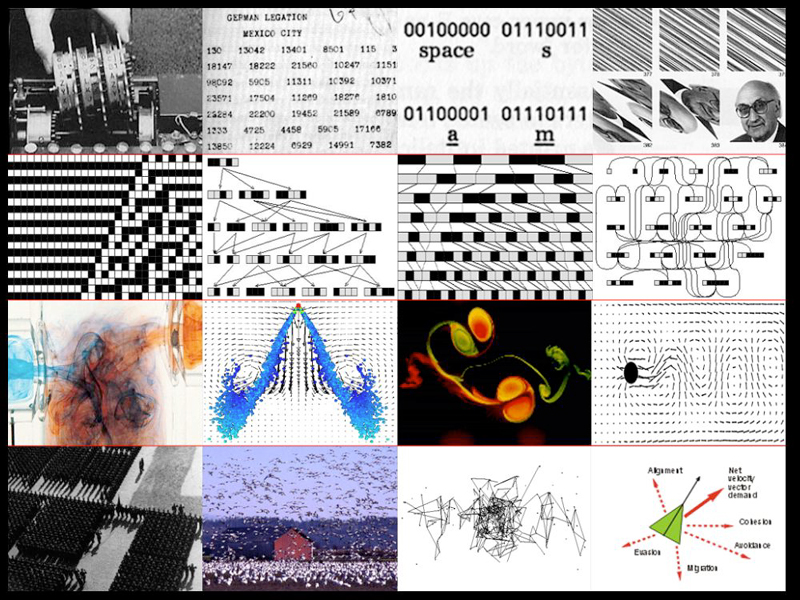
5. Models: Material and Computational
The problems that these kinds of questions raise for a discipline like architecture, which deals with complex objects and assemblies with multiple aspects, might be engaged via research into other venues such as computing, life sciences, and physical systems. Each of these disciplines works consistently with notions of iteration, non-linearity, performance and material process Ð all contributors to the ways in which objects elude the arrest of representation. Some mathematical models of rule-based organization and flexible systems are: encryption which replaces grammatical rules with mathematical rules, cellular systems in which clusters of cells are endowed with low-tech intelligence to generate and organize other clusters of cells, particle systems in which entropy and machine intelligence mix randomness and stability over time, and distributed behavior models in which vitality and intelligent systems like flocking and schooling are simulated with simple spatial rules. Each of these models suggests the constant formation of entities that are more about logics of organization than they are simply about form.
5.5. Swarm Intelligence and Bottom-Up Organization [ SIMULATION - NOT PICTURED ]
To expand on distributed behavior models, for example, one could look at a simple program like Gnat Cloud for principles of flocking. One designs a rule-set for the simulation of a swarm of pixels by selecting rather mathematical options from various menus having to do with population, velocity of members of the population, distance maintained among neighbors, and number of neighbors to affect a component. What is important here is that one only manipulates components and local rules. Rather than designing the form of the swarm, the swarm emerges as a constantly changing formation that is stable over time. This bottom-up approach to formation places importance on rules rather than objects and offers a kind of architectural direction in the sense that the performance of systems provides a logical drive for the generation of objects that does not necessarily hinge on conventions of top-down planning. Here authorship evolves into the enactment of agency.